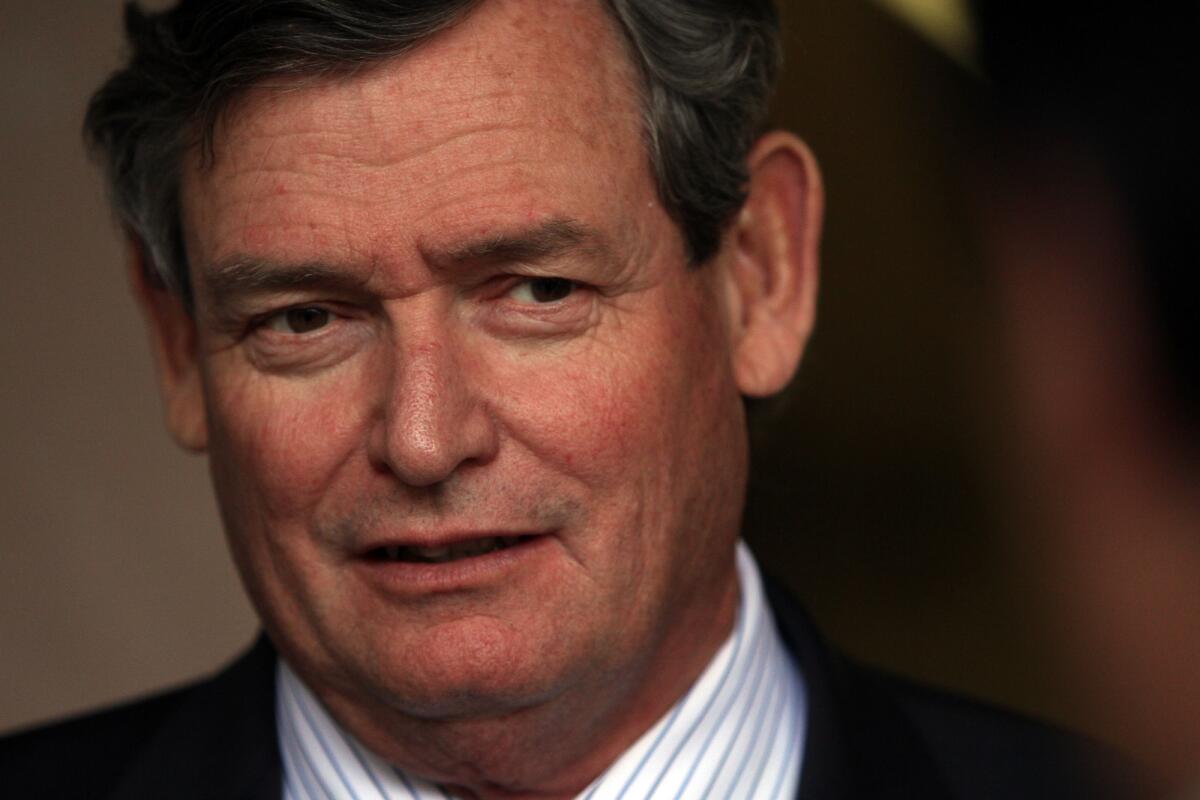Cal State head proposes $50 million for an increase of swift graduations

- Share via
California State University Chancellor Timothy P. White announced a $50-million plan Wednesday to hire more experienced faculty and advisors, create more flexible class schedules and provide students more internships and other opportunities to help them graduate more quickly.
The measures are part of an ambitious project over the next decade to increase graduation rates for first-time undergraduates by 10% and for community college transfers by 5%, as well as to improve the overall learning environment for students, White said.
The plan was announced during White’s “state of the university” address to the Board of Trustees during their meeting in Long Beach. The 23-campus system is the largest higher education system in the nation, serving more than 440,000 students.
“Our top priority must be to firm up our fiscal and policy commitments to access, persistence to degree, and degree completion -- to improve the educational experience and degree attainment for all students and to enable students to earn a high quality degree in a shorter amount of time, ” White said.
In a later interview, he said the money would come from state funds, as well as philanthropic and corporate interests. Gov. Jerry Brown’s 2014-15 spending plan includes an increase of $142.6 million for Cal State, less than the $237.2 million the university had hoped for.
White said that some money for the new initiative might need to be redirected from other programs, but that he would consult with faculty and college leaders.
The governor, who attended the meeting, said he was impressed by White’s presentation.
“Good, solid,” Brown said. “It lays out the challenges, but also recognizes the fantastic contributions the state colleges make to California.”
White identified seven key areas to spur student success:
- Hiring more tenure-track faculty as opposed to lecturers, who may be less experienced and may have less time to mentor students;
- Appointing more advisors to help students graduate;
- Developing more online courses in high-demand subjects that would be open to students from all campuses;
- Ensuring that more first-time students are prepared for college-level English and math before arriving on campus;
- Increasing programs such as internships, study abroad and service learning, that keep students in school;
- Gathering more data about what programs work;
- Using admission preferences to improve access for community college transfers.
The goals are important, White said, because the state will need to produce an additional 1 million college graduates by 2025 to meet workforce needs. Cal State, he noted, awards nearly one-half of the state’s baccalaureate degrees.
Meanwhile, demand is greater than ever, with the system receiving more than 760,000 undergraduate applications for fall 2014.
Board chairman Bob Linscheid said the initiative reflects the board’s charge to focus more intently on meeting student needs.
“He laid the groundwork with a seven-point plan and if each part can make a small bite into the problem, it goes a long way to getting to a solution,” Linscheid said.
The university faces a number of obstacles, including meeting the needs of a sizeable number of students -- 145,000 in 2012-13 -- in the lowest income bracket, earning less than $20,262, as well as large numbers of part-time students who work.
Another challenge is a huge backlog of buildings and facilities needing maintenance that totals more than $2 billion, including $500 million in urgent repairs.
Trustees were given a graphic example from San Francisco State University, where the campus science building had to be closed 10 days ago because of high levels of mercury, asbestos and lead.
The campus had to relocate classes and laboratory space for more than 9,000 students and has called on the University of California San Francisco and even K-12 schools to help out, said president Leslie E. Wong.
“We don’t know when the building will be usable again and we have no idea if the building is reusable,” Wong said.
More to Read
Sign up for Essential California
The most important California stories and recommendations in your inbox every morning.
You may occasionally receive promotional content from the Los Angeles Times.











